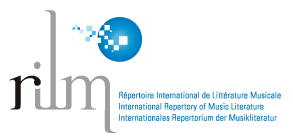Esnaola contra Rosas.
Keywords:
Juan Pedro Esnaola, Juan Manuel de Rosas, crypto-unitarian, dictatorship, political expressionAbstract
Argentine pro-Rosas or revisionist historiography tends to consider Juan P. Esnaola as a party member of the Buenos Aires governor, Juan M. de Rosas. The composer’s biographers were more cautious, and for a good reason. A minute examination of his life on the basis of documents both well-known and newly-found does not yield any argument to support his sympathies for the ruler. On the contrary, a plethora of clues of a different nature suggests that Esnaola was an opponent of the regime. This idea stems out of the imprisonment that he suffered by Rosas’s order, documented here for the first time in detail; and out of gestures in his compositions, sometimes minimal in size but always remarkable in kind, which this article interprets as a projection of images critical to the governor, in terms of negative allegory (in the song La risa de la beldad), ironic representation (in three encomiastic anthems dedicated to Rosas), and moral condemnation (in the Lamentations for choir and orchestra, Heth. Cogitavit Dominus). In the final analysis, it becomes possible to understand Esnaola only as a subject fractured by the government’s brutality, which lead him to use masks, both personal and musical, to disguise dangerous convictions; he thus converted himself into one of the relatively numerous “crypto-unitarians” of Buenos Aires under the Rosas regime.
Downloads
Published
Issue
Section
License
Copyright (c) 2010 Asociación Argentina de Musicología

This work is licensed under a Creative Commons Attribution-NonCommercial 4.0 International License.
ATTRIBUTION-NONCOMMERCIAL 4.0 INTERNATIONAL
https://creativecommons.org/licenses/by-nc/4.0/
You are free to:
- Share — copy and redistribute the material in any medium or format
- Adapt — remix, transform, and build upon the material
- The licensor cannot revoke these freedoms as long as you follow the license terms.
Under the following terms:
- Attribution — You must give appropriate credit , provide a link to the license, and indicate if changes were made . You may do so in any reasonable manner, but not in any way that suggests the licensor endorses you or your use.
- NonCommercial — You may not use the material for commercial purposes .
- No additional restrictions — You may not apply legal terms or technological measures that legally restrict others from doing anything the license permits.
Notices:
You do not have to comply with the license for elements of the material in the public domain or where your use is permitted by an applicable exception or limitation .
No warranties are given. The license may not give you all of the permissions necessary for your intended use. For example, other rights such as publicity, privacy, or moral rightsmay limit how you use the material.







